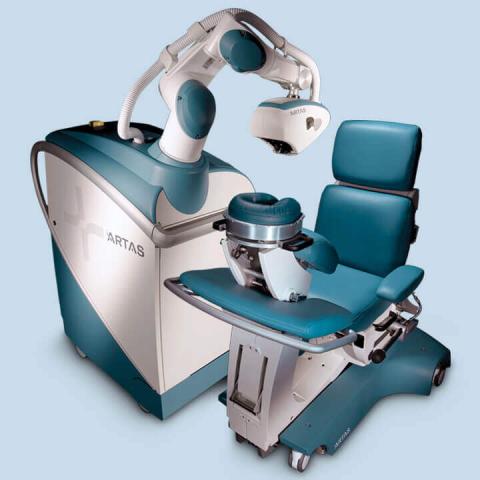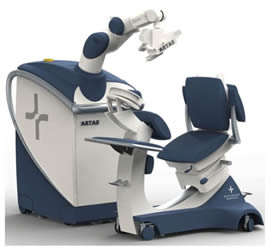Robotic assisted follicular unit extraction (RA-FUE) and automated devices are modern technologies used in hair transplant procedures to improve the precision and efficiency of follicle extraction.
RA-FUE involves using a robotic arm to perform the extraction of individual hair follicles. The surgeon uses a computer interface to control the robotic arm, which uses a small punch tool to extract the hair follicles with high precision and consistency. This technique minimizes the risk of human error and can potentially lead to better outcomes.
Automated devices, such as the NeoGraft and Artas systems, also aim to improve the precision and efficiency of follicle extraction. These devices use a combination of suction and vibration to extract hair follicles, reducing the need for manual force and reducing the risk of damage to the follicles. Automated devices can also speed up the extraction process, allowing for larger numbers of follicles to be extracted in a shorter period of time.
While RA-FUE and automated devices can offer several advantages in hair transplant procedures, it is important to note that they do not replace the need for a skilled and experienced surgeon. The surgeon's expertise in hairline design, graft placement, and post-operative care are still crucial to achieving a natural-looking and long-lasting result.
In addition, the use of RA-FUE and automated devices may increase the cost of the procedure, and patients should carefully consider the potential benefits and drawbacks before deciding on a particular technique.
Overall, RA-FUE and automated devices are modern technologies that can potentially improve the precision and efficiency of follicle extraction in hair transplant procedures. However, it is important to choose a qualified and experienced surgeon and carefully consider the potential benefits and drawbacks of these techniques.
To discuss the ARTAS, NeoGraft or FUE with veteran hair transplant patients or expert hair restoration physicians, visit the "Follicular Unit Extraction Forum".













